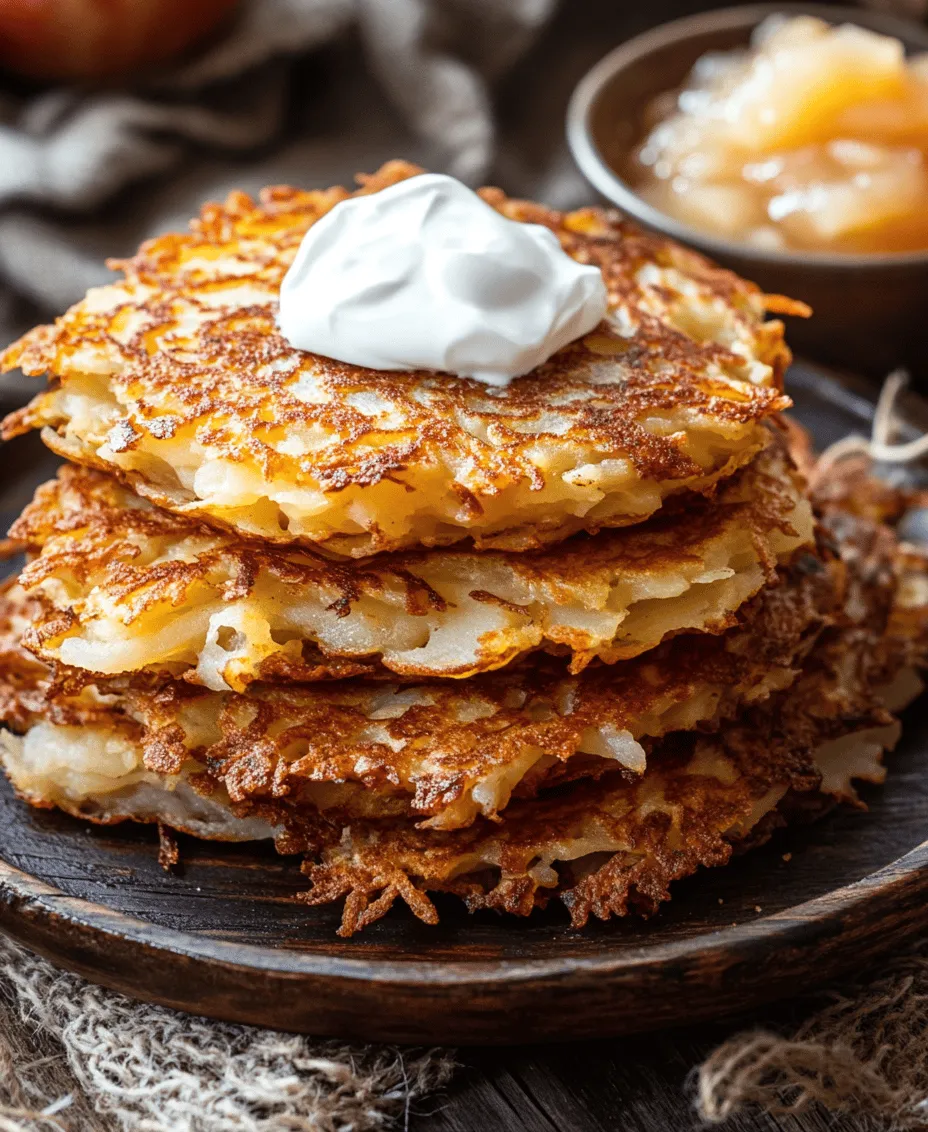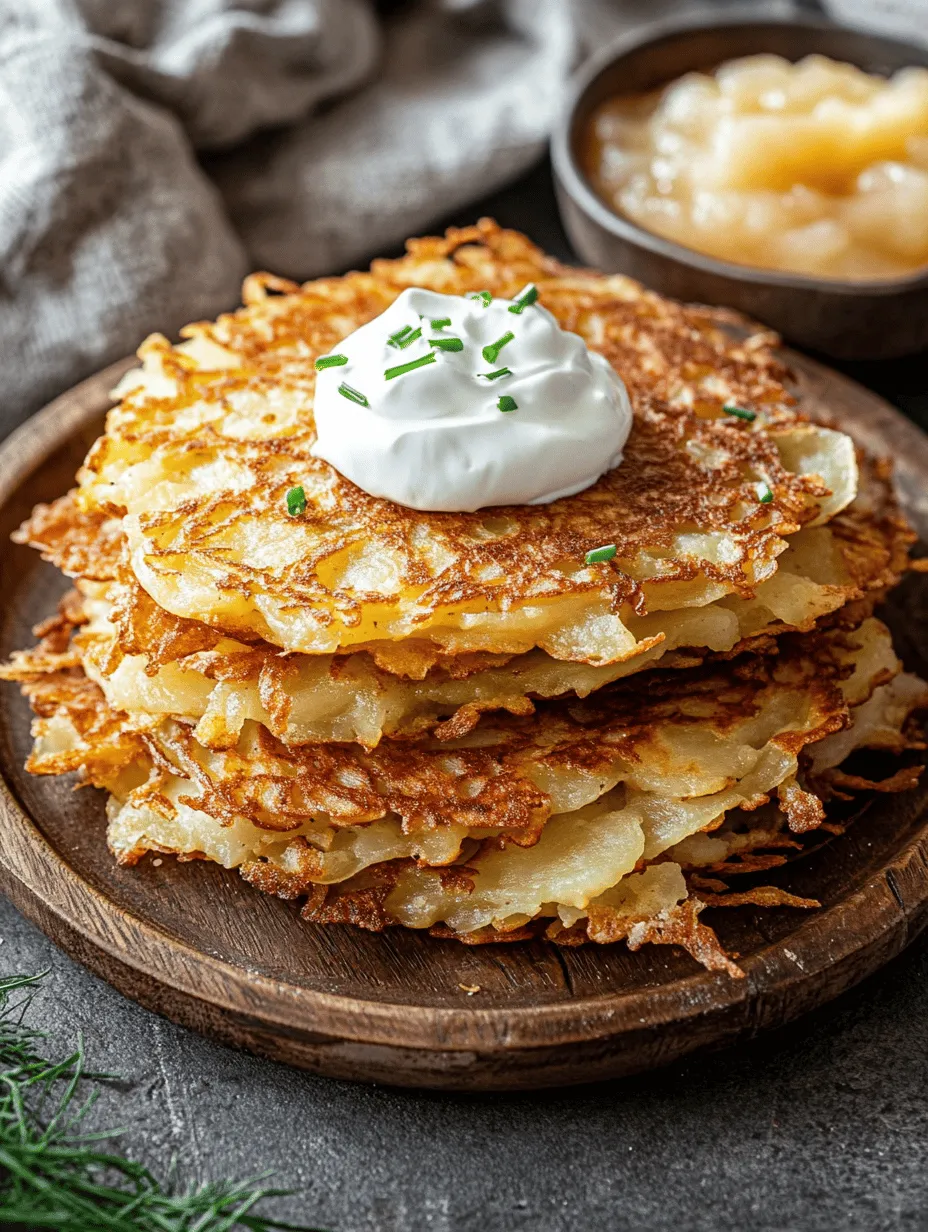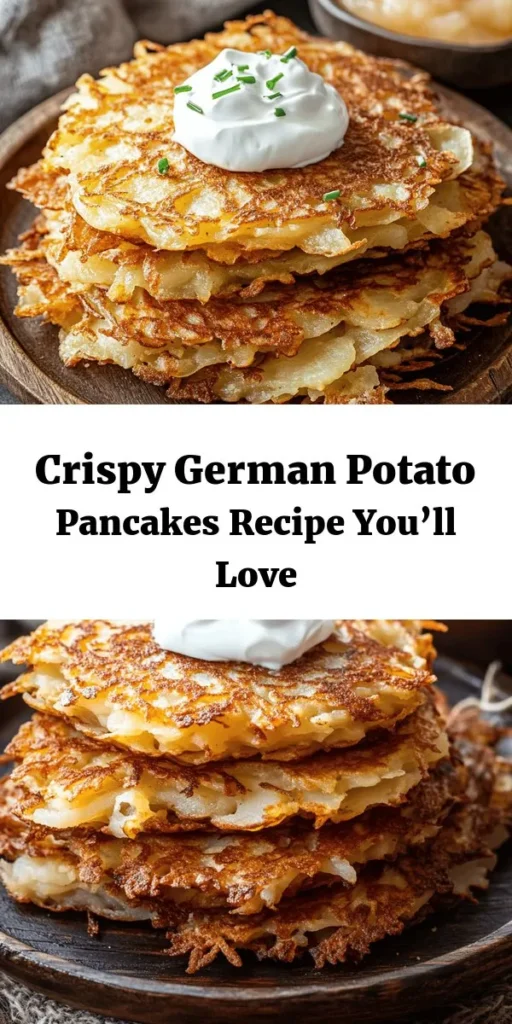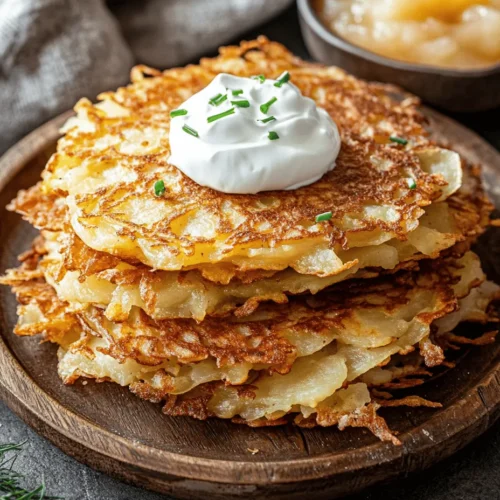Introduction
German potato pancakes, known as Reibekuchen or Kartoffelpuffer, are a beloved dish with deep roots in German culinary tradition. These pancakes are not only a staple in German households but also a popular street food, often enjoyed at festive markets during the winter months. Their cultural significance goes beyond mere sustenance; they represent comfort and warmth, evoking memories of family gatherings and traditional celebrations.
What sets these potato pancakes apart is their delightful crispy texture and comforting flavors. Imagine biting into a golden-brown pancake, the exterior perfectly crisp while the inside remains soft and fluffy. This contrast makes them irresistible, appealing to both casual cooks and culinary enthusiasts who cherish authentic, traditional recipes. Whether served with applesauce, sour cream, or even alongside savory dishes, these pancakes offer a versatile option for any meal.
In this article, we will take a deep dive into mastering the art of making crispy authentic German potato pancakes. We will explore the key ingredients that contribute to their delightful texture and flavor, provide step-by-step instructions to guide you through the cooking process, and share valuable tips to ensure your pancakes turn out perfect every time. Get ready to impress your family and friends with this deliciously satisfying dish that embodies the heart of German cuisine.
Understanding the Key Ingredients
Russet Potatoes
At the heart of any great potato pancake recipe are the potatoes themselves, and for authentic German potato pancakes, russet potatoes are the go-to choice. Known for their high starch content and fluffy texture, russets create a pancake that is both crispy on the outside and tender on the inside. The starchy composition helps the pancakes hold together during frying while providing that desired crispy crust.
When selecting russet potatoes, look for those that are firm and free of blemishes. The moisture content in these potatoes is also essential; too much moisture can lead to soggy pancakes. To achieve the perfect balance, it’s crucial to remove excess moisture during the preparation process, which we will discuss in detail later.
Onions
Onions play a pivotal role in enhancing the flavor profile of German potato pancakes. When grated and mixed into the potato batter, they add a subtle sweetness and depth that complements the potatoes beautifully. The key to incorporating onions effectively lies in the grating technique. Opt for a fine grater to ensure the onion is evenly distributed throughout the mixture, preventing any large chunks that could disrupt the pancake’s texture.
Additionally, you can choose between yellow or white onions, depending on your preference. Yellow onions impart a richer flavor, while white onions offer a sharper taste. Either way, the right amount of onion can elevate your potato pancakes from simple to extraordinary.
Eggs and Flour
Both eggs and flour serve as binding agents in this recipe, crucial for holding the pancake mixture together during frying. Eggs add moisture and richness, helping to create a cohesive batter that won’t fall apart in the pan. Flour contributes to the structure, providing stability and enhancing the crispiness of the final product.
When measuring flour, be careful not to overdo it; too much flour can lead to dense pancakes. A light hand is essential to achieving the right consistency, which should be thick enough to hold its shape while remaining pliable enough to spread easily in the pan.
Seasonings
Seasonings are what truly bring German potato pancakes to life. A simple combination of salt, pepper, garlic powder, and nutmeg can elevate the flavor of your pancakes significantly. Salt helps to enhance the natural flavors of the potatoes and onions, while pepper adds a hint of warmth. Garlic powder infuses the batter with a savory depth, and nutmeg introduces a subtle aromatic note that is often associated with traditional potato dishes.
Feel free to experiment with additional seasonings or herbs, such as parsley or dill, to personalize the flavor profile according to your taste preferences. The beauty of this recipe lies in its adaptability, allowing you to create a version that suits your palate.
Step-by-Step Instructions for Perfect Pancakes
Preparing the Potatoes
The first step in crafting crispy authentic German potato pancakes is properly preparing the potatoes. Start by peeling the russet potatoes using a vegetable peeler. Once peeled, rinse them under cold water to remove any dirt or impurities. This step is crucial as it helps maintain the potatoes’ freshness and prevents oxidation.
Next, you will need to grate the potatoes. Using a box grater or a food processor with a grating attachment, shred the potatoes into fine pieces. The finer the grating, the better the texture of the pancakes will be. After grating, it’s essential to remove excess moisture to ensure crispiness. Use a clean kitchen towel or cheesecloth to wrap the grated potatoes and squeeze out as much liquid as possible. This step is vital; if you skip it, your pancakes may turn out soggy rather than crispy.
Combining Ingredients
Once your potatoes are prepared, it’s time to combine all the ingredients. In a large mixing bowl, add the grated potatoes, finely grated onions, eggs, and flour. Season the mixture with salt, pepper, garlic powder, and a pinch of nutmeg. Using a fork or a spatula, gently mix the ingredients until they are well combined. Be careful not to overmix, as you want to maintain the integrity of the potato shreds.
The consistency of the mixture should be thick enough to hold together but not overly dense. If the batter seems too loose, you can add a little more flour, one tablespoon at a time, until you achieve the desired consistency. The goal is to create a batter that will hold its shape in the pan while still allowing for that crispy exterior.
Heating the Oil
The final step before frying your potato pancakes is to heat the oil. Choosing the right type of oil is essential for achieving that perfect golden-brown crust. Vegetable oil, canola oil, or even clarified butter are excellent options for frying. Each of these oils has a high smoke point, making them suitable for frying without burning.
In a large skillet or frying pan, pour enough oil to cover the bottom of the pan generously, about 1/4 inch deep. Heat the oil over medium-high heat until it shimmers, which indicates it’s hot enough for frying. To test the oil, drop a small spoonful of batter into the pan; if it sizzles immediately, the oil is ready.
When the oil is at the right temperature, you can begin frying the pancakes. Use a ladle or a spoon to drop the batter into the hot oil, forming small pancakes about 3-4 inches in diameter. Avoid overcrowding the pan, as this can lower the oil temperature and result in greasy pancakes.
By following these initial steps, you are well on your way to creating crispy authentic German potato pancakes that are sure to impress. Stay tuned for the next part, where we will delve deeper into the frying process and additional tips for achieving the perfect outcome every time.




